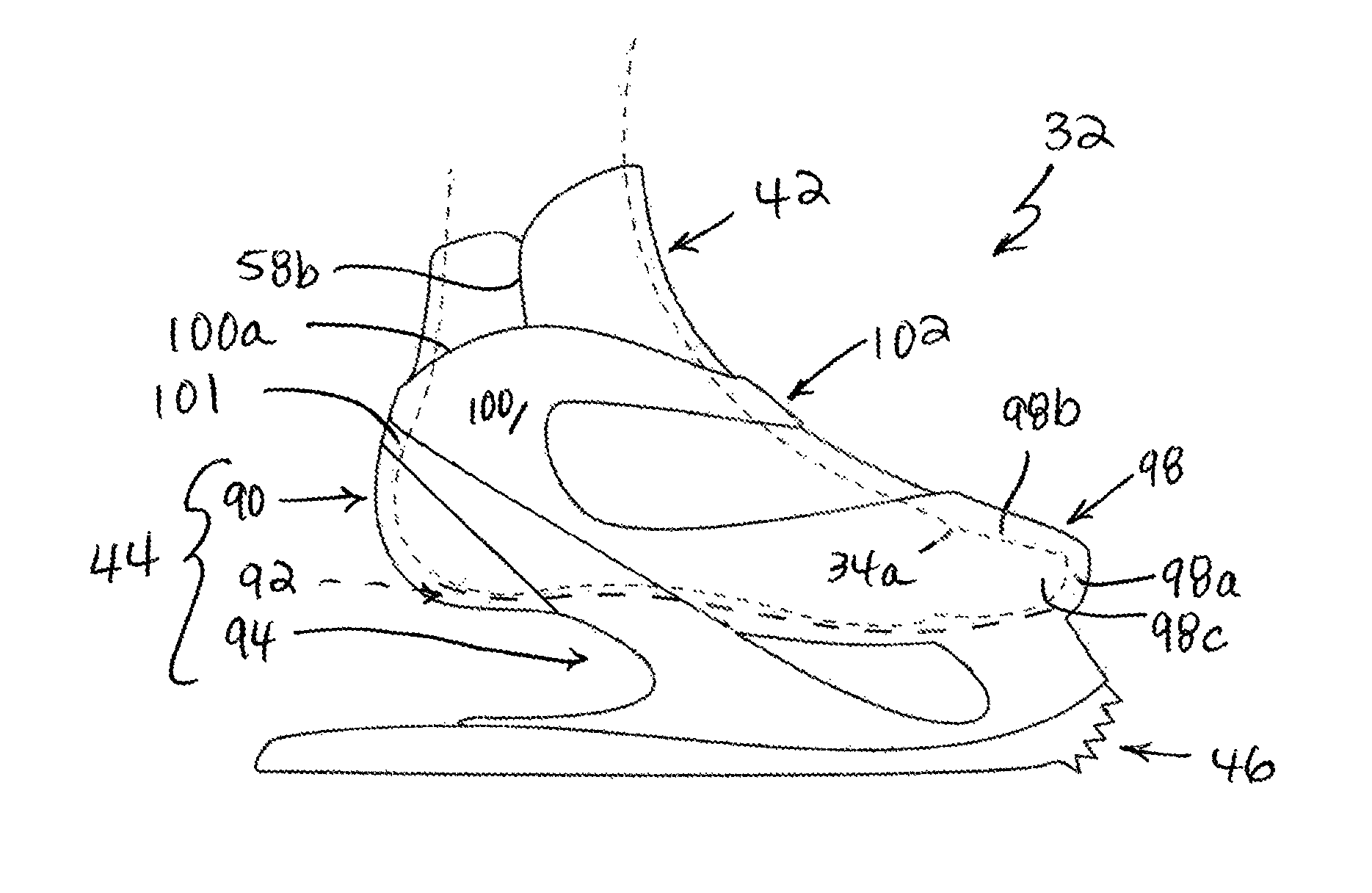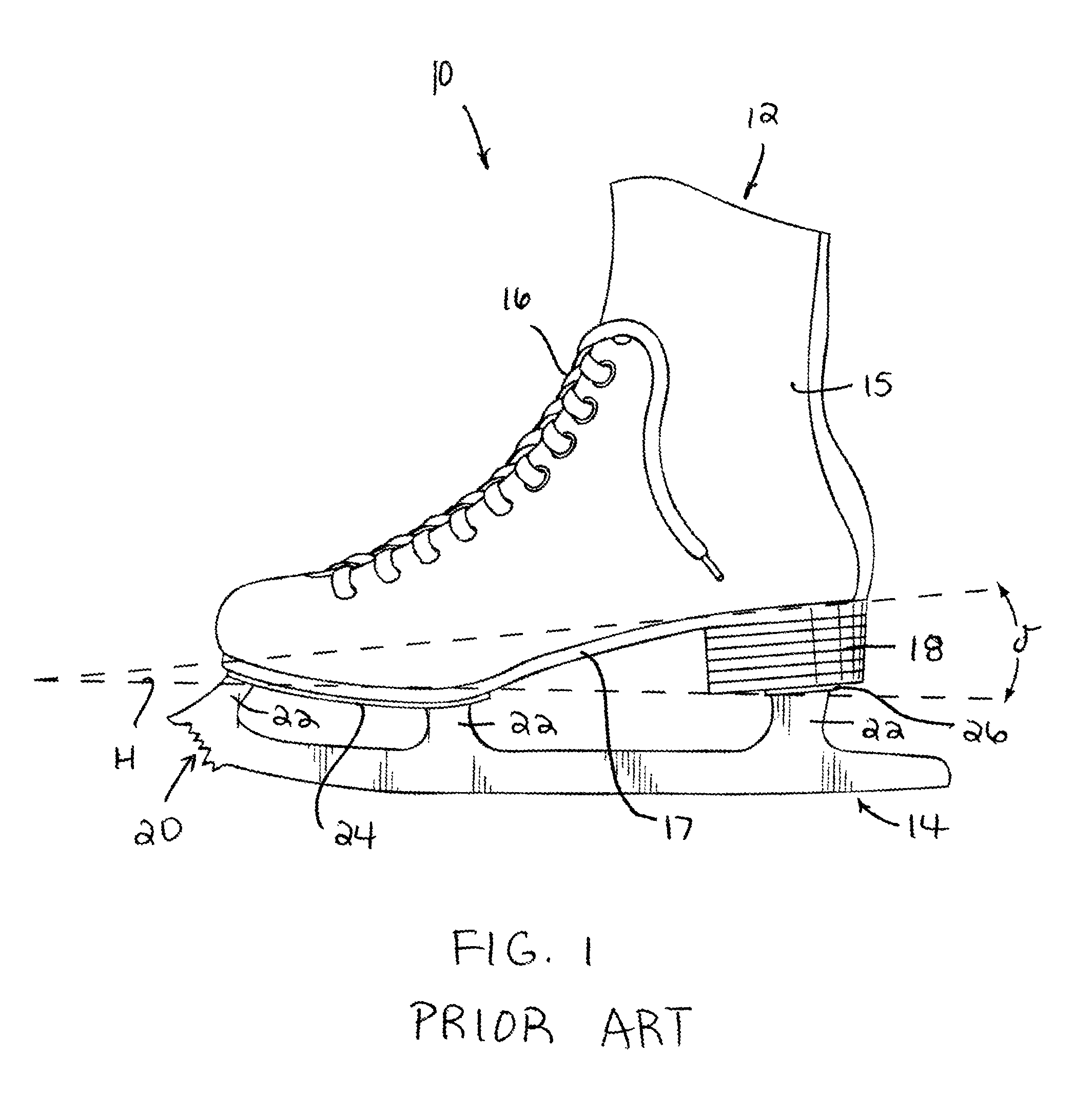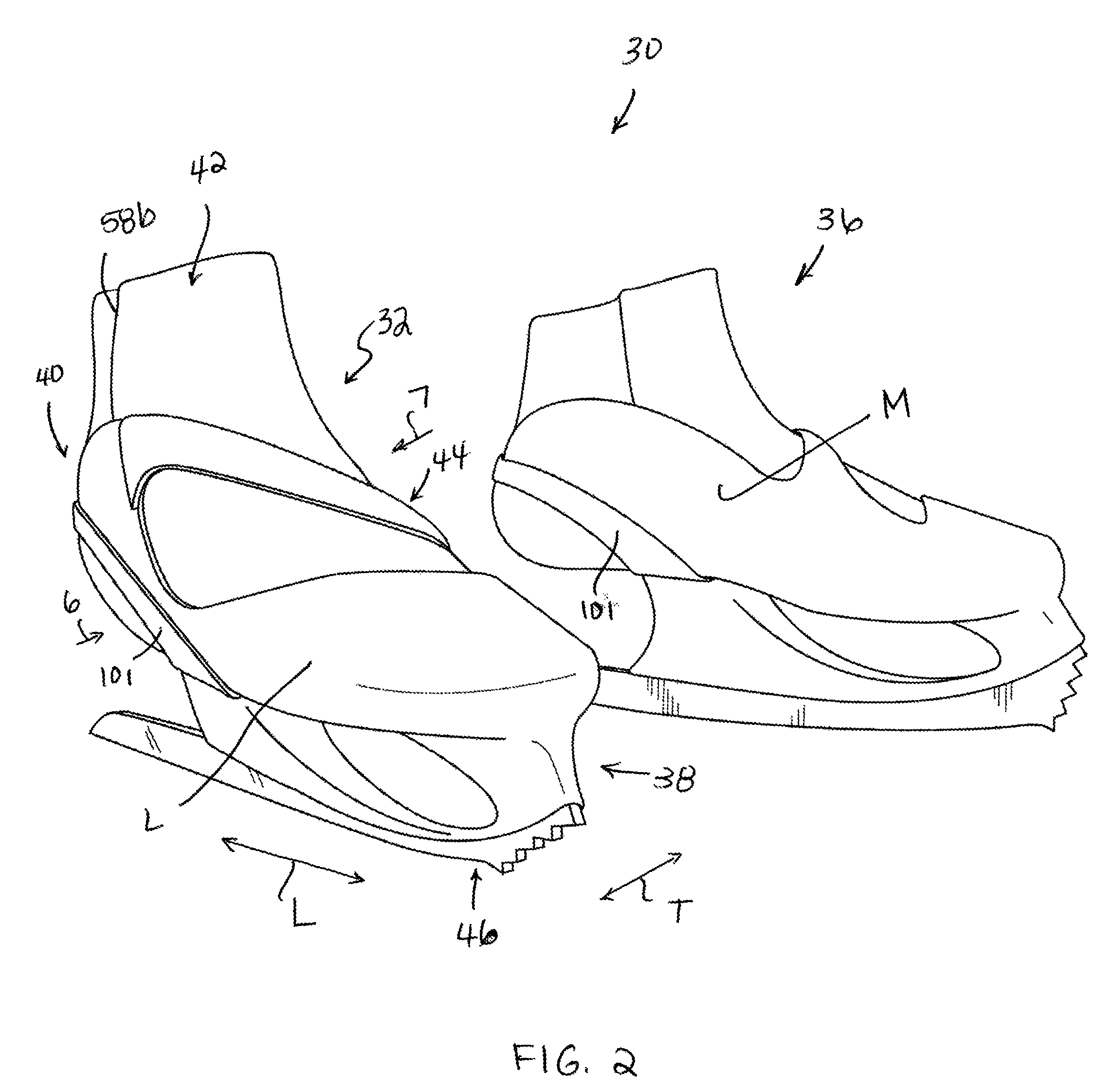Ice skate
a technology for skates and skates, applied in skates, sport apparatus, cycles, etc., can solve the problems of increasing stiffness of skates, increasing the fatigue of skaters, so as to reduce the weight of skaters, improve the jump height, and improve the fit. the effect of comfor
- Summary
- Abstract
- Description
- Claims
- Application Information
AI Technical Summary
Benefits of technology
Problems solved by technology
Method used
Image
Examples
Embodiment Construction
[0069]Referring to FIG. 2, first example of pair of ice skates 30 is shown. Pair of skates 30 includes right ice skate 32 for skater's right foot and leg 34a,b (shown in phantom in FIG. 4) and left ice skate 36 for a skater's left foot and leg (not shown). Pair of skates 30 is usable by a wearer to glide and perform various maneuvers on ice. The components for left skate 36 are mirror images of the components for right skate 32, as discussed below.
[0070]Skate 32 includes forward or toe end 38 and spaced rearward or heel end 40. Skate 32 generally includes medial side M and lateral side L for reference. Skate 32 further has transverse axis T and longitudinal axis L.
[0071]Referring to FIGS. 2-3, skate 32 includes boot 42, casing 44, blade 46, and fastener 48. Referring to FIG. 4, boot 42 defines boot chamber 50 for receiving right foot and leg 34a,b (shown in phantom). Boot 42 includes outer layer 52, inner layer 54, and intermediate layer 56a,b therebetween. Outer, intermediate and i...
PUM
 Login to View More
Login to View More Abstract
Description
Claims
Application Information
 Login to View More
Login to View More - R&D
- Intellectual Property
- Life Sciences
- Materials
- Tech Scout
- Unparalleled Data Quality
- Higher Quality Content
- 60% Fewer Hallucinations
Browse by: Latest US Patents, China's latest patents, Technical Efficacy Thesaurus, Application Domain, Technology Topic, Popular Technical Reports.
© 2025 PatSnap. All rights reserved.Legal|Privacy policy|Modern Slavery Act Transparency Statement|Sitemap|About US| Contact US: help@patsnap.com



